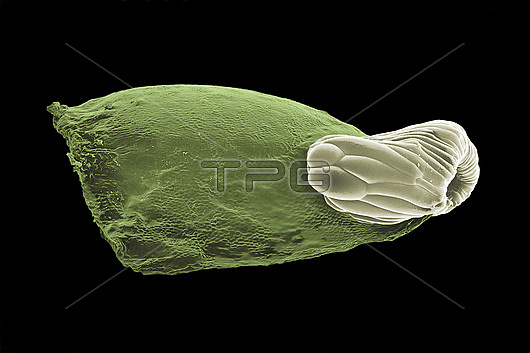
Coloured scanning electron micrograph (SEM) of a seed of red dead-nettle (Lamium purpureum). This is a single seed; at its tip to right, the smooth folded attachment is an elaiosome. Elaiosomes are nutritious fatty structures, attractive to ants. The ant carries the seed to its nest and the elaiosome is fed to the developing larvae. The seed coat is too hard for an ant to crack; as a result, the seed itself may be left in the nest or carried off to be dropped within a short distance. This behaviour (myrmecochory) is an example of mutualism; the ant benefits from a food source, and the plant benefits from the dispersal of its seeds. Elaiosomes occur in at least 10000 plant species. L. purpureum is a common weed of disturbed ground, gardens and arable fields. With a long flowering season from late winter onwards, a large plant can produce tens of thousands of seeds. Magnification: x40 at 10x8.
| px | px | dpi | = | cm | x | cm | = | MB |
Details
Creative#:
TOP26437426
Source:
達志影像
Authorization Type:
RM
Release Information:
須由TPG 完整授權
Model Release:
N/A
Property Release:
N/A
Right to Privacy:
No
Same folder images:

 Loading
Loading